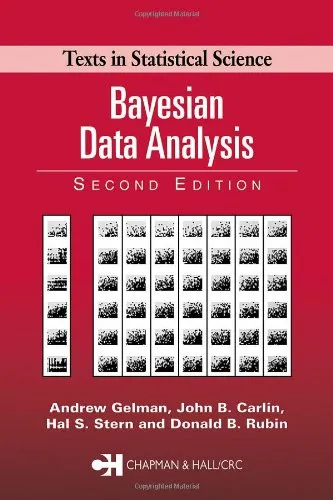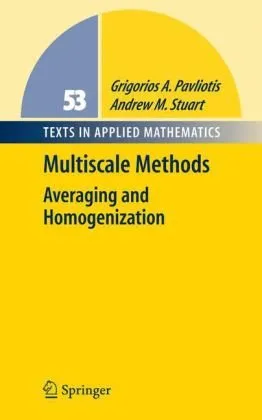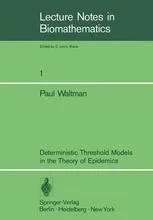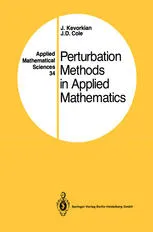Mathematical Models in Epidemiology
4.5
Reviews from our users

You Can Ask your questions from this book's AI after Login
Each download or ask from book AI costs 2 points. To earn more free points, please visit the Points Guide Page and complete some valuable actions.Related Refrences:
Introduction to "Mathematical Models in Epidemiology"
"Mathematical Models in Epidemiology" is a comprehensive guide designed for readers interested in understanding the role of mathematical frameworks in studying the spread, control, and dynamics of infectious diseases. Authored by Fred Brauer, Carlos Castillo-Chavez, and Zhilan Feng, this book combines rigorous mathematical theory with real-world applications, enabling students, researchers, and professionals to explore the fascinating interplay between epidemiology, mathematics, and public health policy.
With infectious diseases remaining a significant challenge in global health, the book offers an invaluable toolkit for modeling and analyzing key aspects of disease dynamics. It explores how mathematical modeling provides insights into disease spread, helps design effective intervention strategies, and predicts trends in public health emergencies. This approachable yet comprehensive guide is rooted in theory but always keeps practical applications in focus, making it an essential read for academics and policymakers alike.
Detailed Summary of the Book
The book is structured to guide readers progressively through diverse topics in mathematical epidemiology. The early chapters focus on the basics, introducing fundamental concepts such as reproduction numbers, disease-free equilibria, and stability analysis. For readers new to the field, these principles serve as the foundation upon which more advanced topics are built.
Subsequent chapters dive into compartmental models like SIR (Susceptible-Infectious-Recovered), SEIR (Susceptible-Exposed-Infectious-Recovered), and their variations. These models are explored in depth to demonstrate the implications of assumptions, parameter choices, and population dynamics on disease progression. The authors balance mathematical rigor with intuitive explanations, ensuring the content appeals to both theoretical and applied researchers.
Additional discussions in the book cover topics such as vaccination strategies, contact network effects, and stochastic models. By incorporating these complexities, the book mirrors real-world challenges faced during outbreaks. Specialized topics include age-structured models, multi-strain modeling, and the integration of demographic and epidemiological factors. Each concept is accompanied by detailed examples to bridge the gap between theoretical derivations and practical applications, while exercises at the end of chapters allow readers to test their understanding.
Key Takeaways
- Understand how mathematical modeling is used to predict and study infectious disease dynamics.
- Learn about compartmental model frameworks, including their variants and advanced extensions.
- Discover how mathematical analysis informs public health interventions, such as vaccination programs and quarantine strategies.
- Explore the effects of population heterogeneity, environmental factors, and stochastic processes on disease spread.
- Gain insight into the mathematical foundations of critical concepts like the basic reproduction number (R₀) and endemic equilibria.
Famous Quotes from the Book
The authors have masterfully woven practical and theoretical insights into the fabric of the book. Below are some notable quotes that capture the essence of their approach:
"Mathematical models are not merely tools for prediction but frameworks for understanding and exploring the complex dynamics of infectious diseases."
"The study of disease dynamics transcends numbers and equations; it is the synthesis of mathematics, biology, and public health that fosters a deeper comprehension of our world."
Why This Book Matters
Mathematical epidemiology has become increasingly critical in addressing contemporary health crises, such as the COVID-19 pandemic. The ability to model, analyze, and interpret the spread of infectious diseases is a skillset that transcends academic disciplines and geographical borders, making this book a timely and relevant resource.
The authors have meticulously designed the content to cater to a broad audience, ensuring accessibility for beginners while maintaining depth for advanced researchers. Beyond its theoretical contributions, the book highlights the vital role of mathematical modeling in guiding public health decisions, shaping policies, and saving lives. Whether you're a student entering the field, a researcher honing your expertise, or a policymaker seeking to understand epidemiological insights, "Mathematical Models in Epidemiology" provides the clarity and tools needed to bridge the gap between science and societal impact.
In a world increasingly impacted by infectious diseases, this book equips readers with the knowledge and frameworks required to make a meaningful difference. Its blend of accessibility, rigor, and relevance ensures that it will remain a cornerstone text in the field of mathematical epidemiology for years to come.
Free Direct Download
You Can Download this book after Login
Accessing books through legal platforms and public libraries not only supports the rights of authors and publishers but also contributes to the sustainability of reading culture. Before downloading, please take a moment to consider these options.
Find this book on other platforms:
WorldCat helps you find books in libraries worldwide.
See ratings, reviews, and discussions on Goodreads.
Find and buy rare or used books on AbeBooks.
1414
بازدید4.5
امتیاز0
نظر98%
رضایتReviews:
4.5
Based on 0 users review
Questions & Answers
Ask questions about this book or help others by answering
No questions yet. Be the first to ask!















